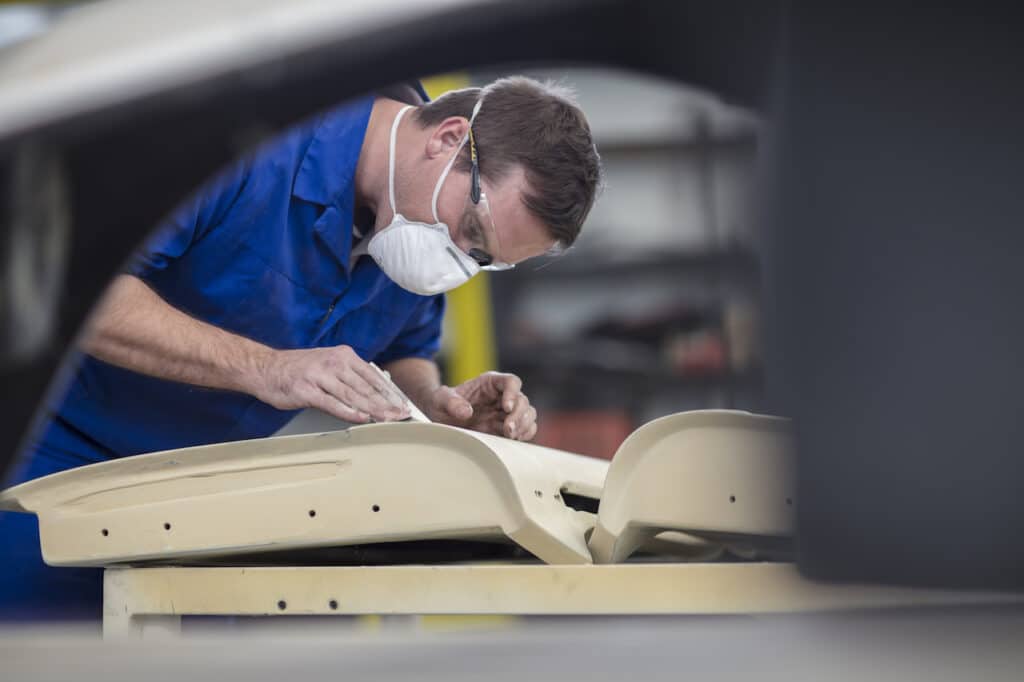Hail damage to cars is classified as either cosmetic or structurally damaging but mostly, incredibly inconvenient. When the weather takes a turn for the worse and your car is caught in the middle of a hailstorm, it can be difficult to know what to do next. Do you fix the damage right away or wait it out? What kind of repair methods are available?
According to Policy Advice, property damage was recorded mostly for vehicles, roofs, homes, and windows in a Colorado storm in 2017 that caused roughly $2.3 billion worth of damage. Here’s a quick rundown of the different types of hail damage to cars and when you should start thinking about your car hail damage repair:
Types of Hail Damage
Cosmetic Damage
Cosmetic damage is any type of damage that does not affect the car’s performance or safety. This includes dents, dings, paint chips, and scratches. It has a wide umbrella of types of car hail damage repair including the following:
- Dent and Dings: These are the most minor (and most common) types of hail damage. Dents and dings are usually small in size and can be found on any part of the car.
- Paint Chips: Paint chips occur when hailstones hit the car with enough force to break through the paint. These can be more difficult to repair than dents and dings, as the paint will need to be completely redone in that area.
- Cracks: These can be the most serious type of cosmetic hail damage as they can affect the car’s structural integrity. Cracks can occur in the windshield, windows, or any part of the car body. If left unrepaired, cracks can lead to bigger problems down the road.
Severe Structural Damage
Structural damage is any type of damage that affects the car’s performance or safety. Structural damage should be fixed as soon as possible as it can create bigger problems down the road.
- Frame Damage: Frame damage is when the car’s frame is bent or warped. This type of damage can cause the car to handle poorly, or even become unsafe to drive.
- Engine Damage: Although not as common, there is a possibility that hail will cause engine damage.
How Can You Repair the Damage?
There are a few different methods available, depending on the severity of the damage:
- Paintless Dent Repair (PDR) is a popular method for repairing minor dents and dings. PDR uses special tools to massage the dent out from the inside of the car body. This method is less invasive than traditional repair methods, and can often be done in a matter of hours.
- For more serious damage, such as cracks or paint chips, you’ll need to take your car to a body shop for a conventional repair. The technician will assess the damage and give you an estimate for the repair.
In most cases, the car hail damage repair will include the need to be repainted, and the windshield or windows needing to be replaced.
When Should You Repair the Damage?
The answer to this question depends on the severity of the damage. For minor cosmetic damage, you can choose to repair it right away or wait until you have the time and money. However, for more severe structural damage, it’s important to have it fixed as soon as possible. This kind of damage can be dangerous and can cause bigger problems down the road.
However, most damage gets worse over time. So if you’ve been hit by a hailstorm, don’t wait to get your car hail damage repaired. Bring it to a body shop and have the damage fixed as soon as possible.
Get Your Car In Top Shape with Valley Collision
At Valley Collision Center, we are I-Car Gold Class approved. Call our experts and we will help get your car hail damage repaired. We offer a variety of repair services and an online estimate.

